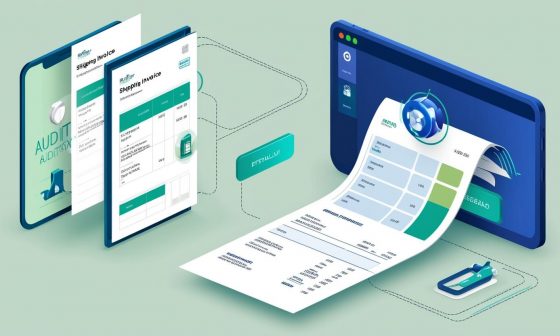Today’s UPS and FedEx carrier contracts are very complicated and more difficult to negotiate than ever before. It can be daunting for online sellers to understand all shipping jargon in their agreement leave alone negotiate them.
With the extensive data on shipping performances, you can turn tables and gain the upper hand on shipping contract negotiation
Here’s a quick checklist of items on your shipping agreement that you must take note of while negotiating your contract:
Surcharges
Just one look at your shipping invoice will give you an idea of how many additional components your shipping bills contain. There are several surcharges in your shipping bill. Residential delivery, oversized packages, fuel hikes, and various such aspects attract surcharges. In fact, all carriers have their own set of surcharges and every surcharge has its own terms and conditions. So you need to be in a position to identify surcharges that do not apply and filter them out when you are negotiating with your vendor.
For example, if you find a hefty discount on the FedEx shipping charges for packages shipped to zone 8. But your shipping volume to the zone is low. This is as good as no discount.
Let data lead your understanding of shipping charges, identify what fees are being used the most, and then get a discount of the most used fees.
Dimensional Weight Pricing
A quick context to dimensional weight pricing: UPS and FedEx calculate your actual weight as well as a weight-based on package dimensions vis a vis –
Volumetric weight in pounds = L xWxH/139, where L= Length in inches, W= Width in inches, and H= Height in inches.

The higher between the actual weight and dimensional weight is billed. Sometimes the discrepancy between the 2 can be as high as 40 lbs to 80lbs. Most shippers overlook this discrepancy in billed weight. The complex nature can deter you from pursuing a negotiation on DIM weight pricing. But both FedEx and UPS allow discounts on DIM weight divisors.
Pay Attention to the Fine Print
Your shipping vendor makes certain promises to deliver packages on time failing which they have to refund your shipping money. This is usually stated as a USP in FedEx, UPS or DHL websites. But it is not mandatory. Between the fine prints, shipping carriers can state that your right to recover refunds for service failures is valid.
Case in point, shipping carriers can revoke your right to recover refunds in exchange for a shipping rate discounts. Never give up on your right to refunds. A money-back waiver forces you to never hold your shipping carrier accountable for their delivery mistakes.
Right to Refunds
Just like you could give up on your right to refund in a blink, it is possible to miss claiming them. A lot of businesses are still unaware of the refunds that they can claim according to FedEx, UPS, or DHL money-back guarantee. All you need to do is identify the service failures for your deliveries and claim refunds for them. Sounds simple, doesn’t it?
Unfortunately, the process of claiming refunds is more daunting. FedEx or UPS don’t make it easy to claim refunds for service failures. This is where an automated audit service like AuditShipment comes to your rescue. Millions of package deliveries are processed within seconds by our advanced AI-tech.
Use More Than One Carrier
When you incorporate a multi-carrier strategy into your shipping efforts, you get a number of benefits like shorter transit times, favorable rates, and increased pick up and delivery locations.
UPS and FedEx are competitors so it’s time for you to use this to your advantage and steer negotiations in your favor. Negotiate stronger and better contract terms based on facts and data. Don’t shy away from investing in a shipping invoice auditor to review the invoices for errors. Millions of dollars’ worth of mistakes are made every day by carriers that are never caught by shippers.
Turn to data for insights
Ensure you have adequate insights on the past performances of your shipping carriers. Study individual costs, and go forward. Work out a plan to reduce them. Make a list of cost components that can be done away with or reduced. Assemble the data and ensure you have a list of cases where the shipping carrier has failed to deliver as promised. Invest sufficiently in shipping analytics.
All you need is to be armed with a clear view of the core details that will help you improve your carrier terms. Remember, carriers would prefer for shippers to have a fuzzy view of the shipping data because that opens the door to increase corporate profits.

Holiday Shipping Rates
Holiday seasons happen to be the most rush period in eCommerce. Inevitably and predictably shipping rates go up and if you haven’t specifically asked for it during the negotiation process, the money-back guarantee also ceases to apply for most shipping service types. You should ensure that you request for the money-back guarantee during the holiday season as well.
The secret to acing negotiations is maintaining good relationships with the carrier representative. Like every other relationship, your interpersonal skills will definitely help you get better deals and make your business running easier. Add data and shipping analytics to that, you could be a formidable negotiator.
If you are intimidated by the contract negotiation process, consider using a professional service to take some of the responsibility off your plate. There’s an art to negotiating and the carriers practice it every day. You owe it to your company to match that effort. Hence, when it’s time for your next negotiation, come to the table armed with data, aware of what’s at stake, but ready to play anyway.






